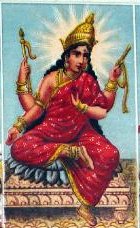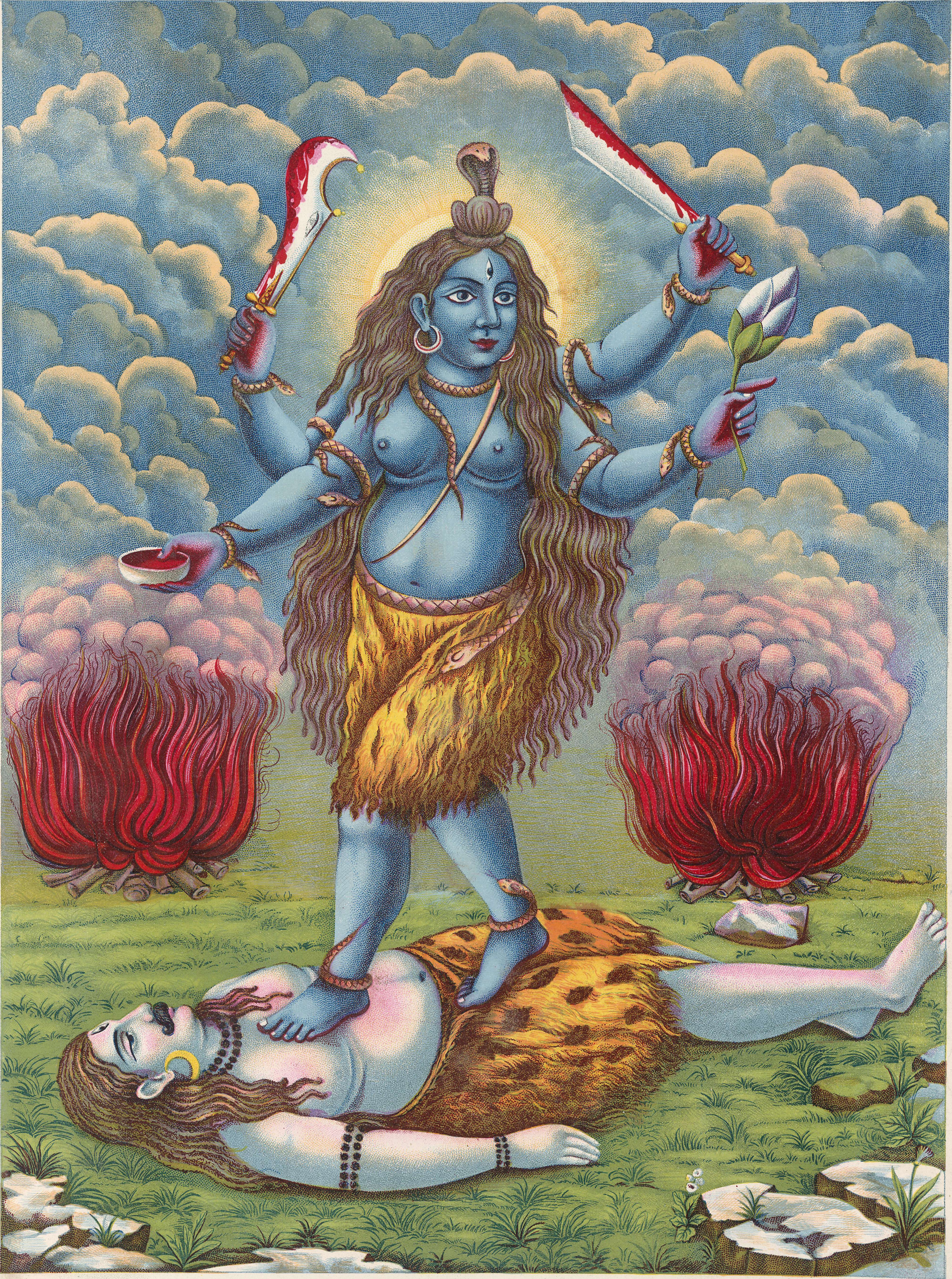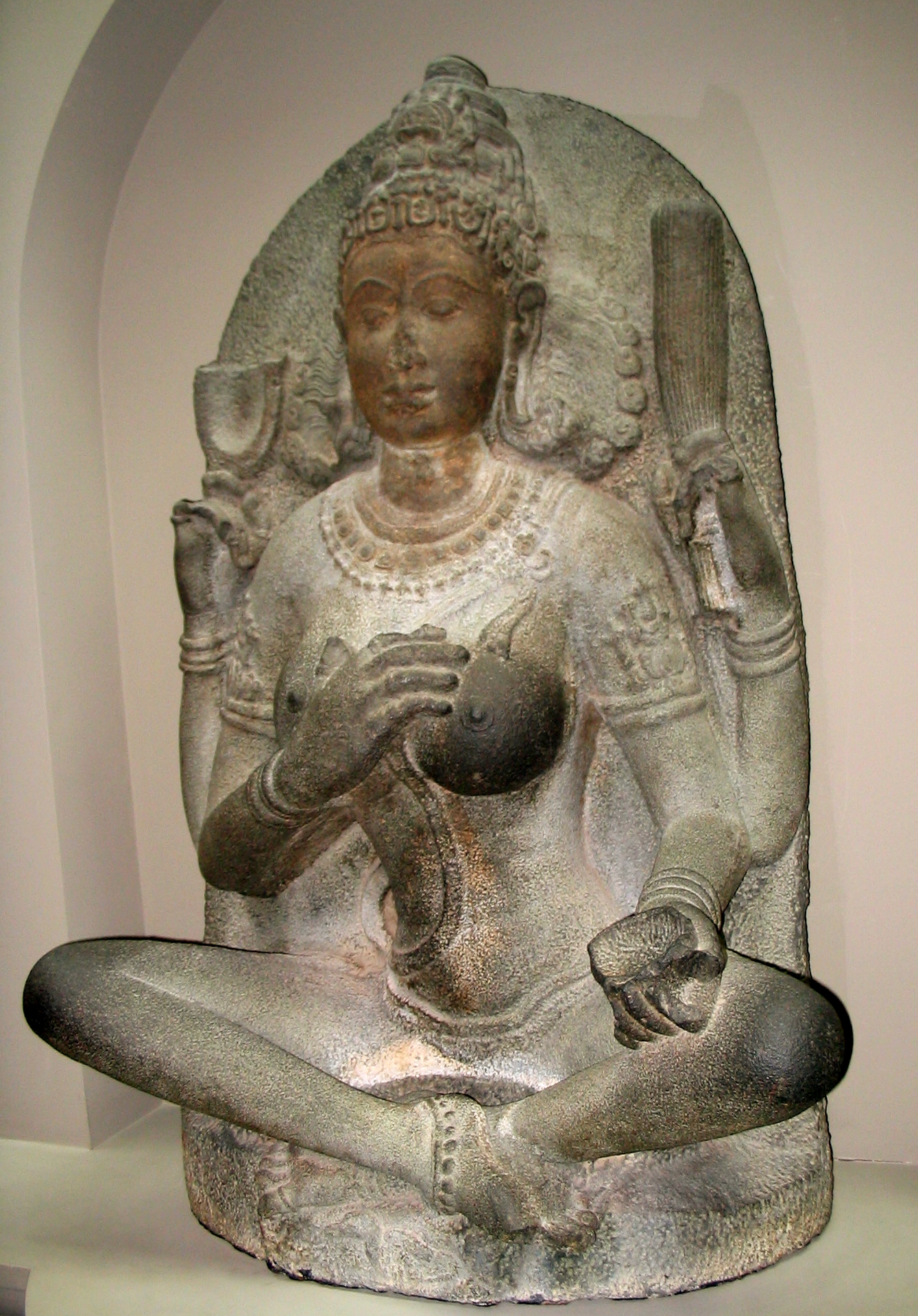|
Kamakhya Temple
The Kamakhya Temple at Nilachal hills in Guwahati, Assam is one of the oldest and most revered centres of Tantra, Tantric practices. The temple is the center of the ''Kulachara Tantra Marga'' and the site of the Ambubachi Mela, an annual festival that celebrates the menstruation of the goddess. Structurally, the temple is dated to the 8th-9th century with many subsequent rebuildings—and the final hybrid architecture defines a local style called Nilachal architecture, Nilachal. It is also one of the oldest of the 51 Shakti Pitha, pithas in the Shaktism, Shakta tradition. An obscure place of worship for much of history it became an important pilgrimage destination, especially for those from Bengal, in the 19th century during Colonial Assam, colonial rule. Originally an autochthonous place of worship of a local goddess where the primary worship of the aniconic ''yoni'' set in natural stone continues till today, the Kamakya Temple became identified with the state power when t ... [...More Info...] [...Related Items...] OR: [Wikipedia] [Google] [Baidu] |
India
India, officially the Republic of India (Hindi: ), is a country in South Asia. It is the seventh-largest country by area, the second-most populous country, and the most populous democracy in the world. Bounded by the Indian Ocean on the south, the Arabian Sea on the southwest, and the Bay of Bengal on the southeast, it shares land borders with Pakistan to the west; China, Nepal, and Bhutan to the north; and Bangladesh and Myanmar to the east. In the Indian Ocean, India is in the vicinity of Sri Lanka and the Maldives; its Andaman and Nicobar Islands share a maritime border with Thailand, Myanmar, and Indonesia. Modern humans arrived on the Indian subcontinent from Africa no later than 55,000 years ago., "Y-Chromosome and Mt-DNA data support the colonization of South Asia by modern humans originating in Africa. ... Coalescence dates for most non-European populations average to between 73–55 ka.", "Modern human beings—''Homo sapiens''—originated in Africa. Then, int ... [...More Info...] [...Related Items...] OR: [Wikipedia] [Google] [Baidu] |
Yoni
''Yoni'' (; sometimes also ), sometimes called ''pindika'', is an abstract or aniconic representation of the Hindu goddess Shakti. It is usually shown with ''linga'' – its masculine counterpart. Together, they symbolize the merging of microcosmos and macrocosmos, the divine eternal process of creation and regeneration, and the union of the feminine and the masculine that recreates all of existence. The ''yoni'' is conceptualized as nature's gateway of all births, particularly in the esoteric Kaula and Tantra practices, as well as the Shaktism and Shaivism traditions of Hinduism. ''Yoni'' is a Sanskrit word that has been interpreted to literally mean the "womb", the "source", and the female organs of generation., Quote: "Yoni- 'womb, vulva', Yoni- "way, abode' is from a second PIE root ..; It also connotes the female sexual organs such as "vagina", "vulva", and "uterus", or alternatively to "origin, abode, or source" of anything in other contexts. For example, the Vedanta tex ... [...More Info...] [...Related Items...] OR: [Wikipedia] [Google] [Baidu] |
Bhairavi
Bhairavi ( sa, भैरवी) is a Hindu goddess, described as one of the Mahāvidyas, the ten avatars of the mother goddess. She is the consort of Bhairava. Etymology The name ''Bhairavi'' means "terror" or "awe-inspiring". She is the fifth of ten Mahāvidyas. She is also called Tripurabhairavi. "Tri" means three, "Pura" means fortress, castle, city, town, etc. Tripura convey three different stages of consciousness i.e. active, dream and deep sleep. She is in the form of all triads and once these triads are transcended, it is believed that Brahman is attained. Hence, she is called Tripurabhairavi. Iconography Her dhyana shloka in the Devi Mahatmya describes her form. She is seated on a lotus with four hands, one with a book, one with rosary beads, one with abhaya mudra and another with varada mundra. She wears red garments and wears a garland of severed heads around her neck. She has three eyes and her head is adorned with a crescent moon. In another form she is car ... [...More Info...] [...Related Items...] OR: [Wikipedia] [Google] [Baidu] |
Bhuvaneshwari
Bhuvaneshvari (Sanskrit: भुवनेश्वरी, IAST: ''Bhuvaneśvarī'') is a Hindu goddess. She is the fourth amongst the ten Mahavidya goddesses in Shaktism, and one of the highest aspects of ''Mahadevi''. She is identified as Adi Parashakti in the Devi Bhagavatam. Etymology The word Bhuvaneshvari is a compound of the words ''Bhuvana Iśwari'', meaning "Goddess of the world" or "Queen of the universe", where the worlds are the ''tri-bhuvana'' or three regions of ''bhūḥ'' (Earth), ''bhuvaḥ'' (atmosphere) and ''svaḥ'' (Heavens). Forms According to the Devi Bhagavata Purana, the goddess offers the five manifestations of the Pancha Prakriti: # Durga # Lakshmi # Saraswati # Gayatri # Radha Temples There are several temples dedicated to Bhuvaneshvari across India. In South India most of the Srividhya tradition upasaka worship her. In Kerala she is also popular among Shaktas. * Sacred Adishakti Bhuvaneswari Devi Shakti Peetha temple in Bilkhet near Satpuli, Pau ... [...More Info...] [...Related Items...] OR: [Wikipedia] [Google] [Baidu] |
Tripura Sundari
Tripura Sundari (Sanskrit: त्रिपुरा सुन्दरी, IAST: Tripura Sundarī), also known as Rajarajeshwari, Shodashi, Kamakshi, and Lalita is a Hindu goddess, worshipped as a principal aspect of supreme goddess Mahadevi mainly venerated in Shaktism, the goddess-oriented sect of Hinduism. She is also one of the ten Mahavidyas. She is praised in many Shakta texts, with '' Lalita Sahasranama, Soundarya Lahari'' being the most popular one. She is known as Adi Parashakti in Lalitopakhyana of Brahmanda Purana. According to the Srikula tradition in Shaktism, Tripura Sundari is the foremost of the Mahavidyas, the supreme divinity of Hinduism and also the primary goddess of Sri Vidya. The Tripura Upanishad places her as the ultimate Shakti (energy, power) of the universe. She is described as the supreme consciousness, ruling from above Brahma, Vishnu, and Shiva. Kinsley says, "In one instance she is said to be sitting on Shiva's lap in the Kameshwara form, the 'Lor ... [...More Info...] [...Related Items...] OR: [Wikipedia] [Google] [Baidu] |
Tara (Devi)
In Hinduism, the goddess Tara ( sa, तारा, ) is the second of the Dasa (ten) Mahavidyas or "''Great Wisdom goddesses''", and is a form of Adishakti, the tantric manifestation of Parvati. Her most famous centre of worship is the temple and the cremation ground of Tarapith in West Bengal, India. Her three most famous forms are Ekajaṭā, Ugratara, and Nīlasarasvatī (Neelasaraswati or Neela Saraswati or Neelsaraswati). Legends and theology The commonly known origin of Tara is from the 17th chapter of the Rudrayāmala which describes the initial unsuccessful attempts of the brahminical sage Vasiṣṭha in the worship of the deity (his initial locations are usually placed by the ocean or in Kāmākhyā according to the Brahmayāmala) and the subsequent meeting of Vishnu in the form of Buddha in the region of Mahācīna and his eventual success by the means of kaula rites which employ the five makāras of Shaakta kaula tantra. She is also described as the form of the A ... [...More Info...] [...Related Items...] OR: [Wikipedia] [Google] [Baidu] |
Kali
Kali (; sa, काली, ), also referred to as Mahakali, Bhadrakali, and Kalika ( sa, कालिका), is a Hinduism, Hindu goddess who is considered to be the goddess of ultimate power, time, destruction and change in Shaktism. In this tradition, she is considered as a ferocious form of goddess Mahadevi, the supreme of all powers, or the ultimate reality. She is the first of the ten Mahavidyas in the Hindu Tantras (Hinduism), tantric tradition. Kali's earliest appearance is when she emerged from Shiva. She is regarded as the ultimate manifestation of Shakti, and the mother of all living beings. The goddess is stated to destroy evil in order to protect the innocent. Over time, Kali has been worshipped by devotional movements and Tàntric sects variously as the Divine Mother, Mother of the Universe, Principal energy Adi Shakti. Shaktism, Shakta Hindu and Tantra, Tantric sects additionally worship her as the ultimate reality or ''Brahman''. She is also seen as the divi ... [...More Info...] [...Related Items...] OR: [Wikipedia] [Google] [Baidu] |
Saktism
Shaktism ( sa, शाक्त, , ) is one of several major Hindu denominations, wherein the metaphysical reality is considered metaphorically a woman and Shakti (Mahadevi) is regarded as the supreme godhead. It includes many goddesses, all considered aspects of the same supreme goddess. Shaktism has different sub-traditions, ranging from those focused on most worshipped Durga, gracious Parvati to that of fierce Kali. The Sruti and Smriti texts of Hinduism are an important historical framework of the Shaktism tradition. In addition, it reveres the texts ''Devi Mahatmya'', the ''Devi-Bhagavata Purana'', ''Kalika Purana'' and Shakta Upanishads such as the Devi Upanishad. The ''Devi Mahatmya'' in particular, is considered in Shaktism to be as important as the ''Bhagavad Gita''. Shaktism is known for its various sub-traditions of tantra, as well as a galaxy of goddesses with respective systems. It consists of the Vidyapitha and Kulamārga. The pantheon of goddesses in Shaktism ... [...More Info...] [...Related Items...] OR: [Wikipedia] [Google] [Baidu] |
Mahavidya
The ''Mahavidya'' ( sa, महाविद्या, , lit. ''Great Wisdoms'') are a group of ten Hinduism, Hindu Tantra, Tantric Devi, goddesses. The 10 Mahavidyas are usually named in the following sequence: Kali, Tara (Devi), Tara, Tripura Sundari, Bhuvaneshvari, Bhairavi , Chhinnamasta, Dhumavati, Bagalamukhi, Matangi and Kamalatmika, Kamala. Nevertheless the formation of this group encompass divergent and varied religious traditions that include ''yogini'' worship, Saivism, Vaishnavism, and Vajrayana Buddhism. The development of the Mahavidyas represent an important turning point in the history of Shaktism as it marks the rise of the Bhakti aspect in Shaktism, which reached its zenith in 1700 CE. First sprung forth in the post-Puranic age, around 6th century C.E., it was a new theistic movement in which the supreme being was envisioned as female. A fact epitomized by texts like ''Devi-Bhagavata Purana'', especially its last nine chapters (31-40) of the seventh ''skandha'', ... [...More Info...] [...Related Items...] OR: [Wikipedia] [Google] [Baidu] |
Yogini
A yogini (Sanskrit: योगिनी, IAST: ) is a female master practitioner of tantra and yoga, as well as a formal term of respect for female Hindu or Buddhist spiritual teachers in Indian subcontinent, Southeast Asia and Greater Tibet. The term is the feminine Sanskrit word of the masculine ''yogi'', while the term "yogin" is used in neutral, masculine or feminine sense. A yogini, in some contexts, is the sacred feminine force made incarnate, as an aspect of Parvati, and revered in the yogini temples of India as the Sixty-four Yoginis. History The worship of yoginis began outside Vedic Religion, starting according to Vidya Dehejia with the cults of local village goddesses, the ''grama devatas''. Each one protects her village, sometimes giving specific benefits such as safety from the stings of scorpions. Gradually, through Tantra, these goddesses were grouped together into a number believed powerful, most often 64, and they became accepted as a valid part of Hinduism. ... [...More Info...] [...Related Items...] OR: [Wikipedia] [Google] [Baidu] |
Naraka
Naraka ( sa, नरक) is the realm of hell in Indian religions. According to some schools of Hinduism, Sikhism, Jainism and Buddhism, ''Naraka'' is a place of torment. The word ''Neraka'' (modification of ''Naraka'') in Indonesian and Malaysian has also been used to describe the Islamic concept of Hell. Alternatively, the "hellish beings" that are said to reside in this underworld are often referred to as ''Narakas''. These beings are also termed in Sanskrit as ''Narakiyas'' ( sa, नारकीय, ), ''Narakarnavas'' ( sa, नरकार्णव, ) and ''Narakavasis'' ( sa, नरकवासी, ). Hinduism Naraka is a realm in the Vedas, a place where souls are sent for the expiation of their sins. It is mentioned primarily in the Dharmashastras, Itihasas, and the Puranas, but also described in the Vedic samhitas, the Aranyakas and the Upanishads. Some Upanishads speak of 'darkness' instead of hell. A summary of the Upanishads and the Bhagavad Gita mentions hell ... [...More Info...] [...Related Items...] OR: [Wikipedia] [Google] [Baidu] |
Kalika Purana
The Kalika Purana ( sa, Kālikā Purāṇa), also called the Kali Purana, Sati Purana or Kalika Tantra, is one of the eighteen minor Puranas (''Upapurana'') in the Shaktism tradition of Hinduism. The text was likely composed in Assam or Cooch Behar: "This story is recounted also in the Kālikāpurāṇa—the earliest text devoted to the worship of Kāmākhyā, probably compiled no later than the tenth–eleventh century in a region between Assam and Koch Bihar (a district of West Bengal)." region of India and is attributed to the sage Markandeya. It exists in many versions, variously organized in 90 to 93 chapters. The surviving versions of the text are unusual in that they start abruptly and follow a format not found in either the major or minor Purana-genre mythical texts of Hinduism. Various types of animal sacrifices for devi are detailed in the Purana. Content The text starts off with the legends of Devi trying to bring Shiva back from ascetic life into that of a household ... [...More Info...] [...Related Items...] OR: [Wikipedia] [Google] [Baidu] |


.jpg)







